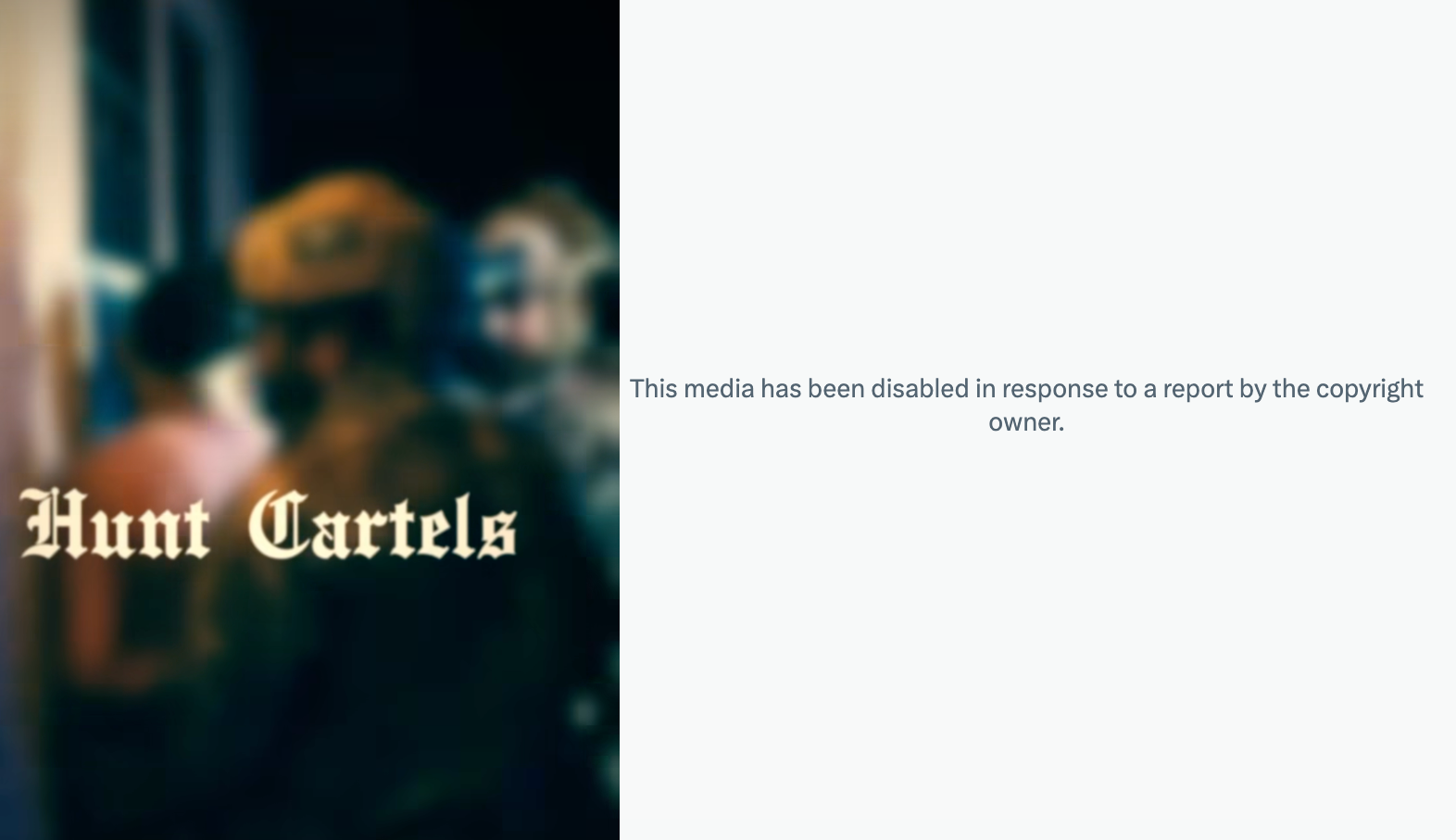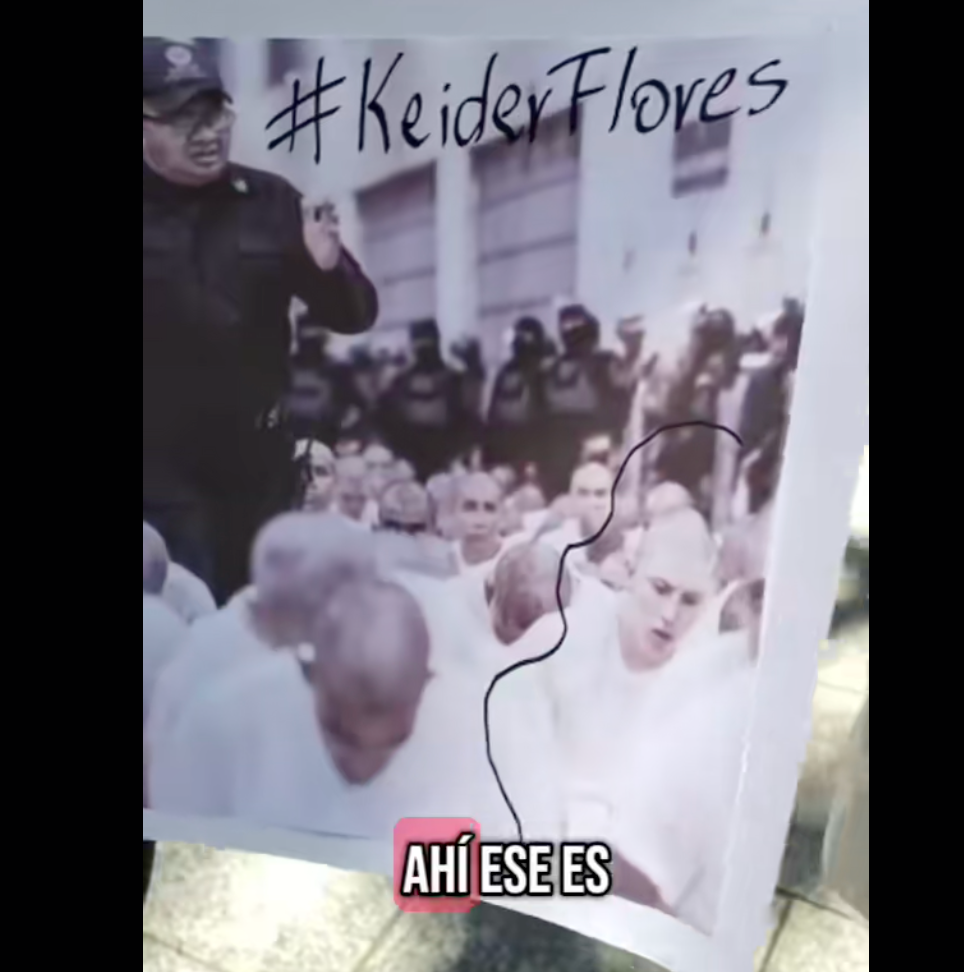What to Know About the Protests Outside U.K. Hotels Housing Asylum Seekers

© Justin Tallis/Agence France-Presse — Getty Images


© Justin Tallis/Agence France-Presse — Getty Images


© Tierney L. Cross/The New York Times


© Madeleine Hordinski for The New York Times


© Paul Ratje for The New York Times


© Mike Blake/Reuters


© Gabriella Angotti-Jones for The New York Times


© Tierney L. Cross/The New York Times


© Evelyn Hockstein/Reuters


© Gabriel V. Cárdenas for The New York Times


© Elio Deisderio/Associated Press


A Department of Homeland Security (DHS) propaganda video that featured Jay-Z’s music was hit with a copyright takedown request on X, and appears to have been hit with copyright violations on both Instagram and Facebook as well.
The video features footage of Immigrations and Customs Enforcement (ICE) agents training and doing immigration raids set to Jay-Z’s 2003 song “Public Service Announcement,” which has recently been used in at least two DHS videos. DHS tweeted the video alongside the caption “Hunt Cartels. Save America. JOIN.ICE.GOV.” The original tweet, from August 10, has 2.9 million views on X; the video has been replaced with the message “This media has been disabled in response to a report by the copyright owner.”


© Jerry Jackson/The Baltimore Sun, via Getty Images


© Shelby Tauber for The New York Times


© Gabriela Bhaskar/The New York Times


© Desiree Rios for The New York Times


© Samir Jana/Hindustan Times, via Getty Images


© Allison Shelley


© Eva Marie Uzcategui/Reuters


© Erin Schaff/The New York Times


© National Archives


© Philip Cheung for The New York Times


A Customs and Border Protection (CBP) agent wore Meta’s AI smart glasses to a June 30 immigration raid outside a Home Depot in Cypress Park, Los Angeles, according to photos and videos of the agent verified by 404 Media.
Meta does not have a contract with CBP, and 404 Media was unable to confirm whether or not the agent recorded any video using the smart glasses at the raid. Based on what we know so far, this appears to be a one-off case of an agent either wearing his personal device to an immigration raid, or CBP trying technology on an ad-hoc basis without a formal procurement process. Civil liberties and privacy experts told 404 Media, however, that even on a one-off basis, it signals that law enforcement agents are interested in smart glasses technology and that the wearing of smart glasses in an immigration raid context is highly concerning.


© Michael A. McCoy for The New York Times


© Priscilla Grant/Everett Collection


© Priscilla Grant/Everett Collection


© Patrick T. Fallon/Agence France-Presse — Getty Images


© Victor J. Blue for The New York Times


© Todd Heisler/The New York Times


© The New York Times


© Anna Watts for The New York Times


© Anna Watts for The New York Times


© Hamza Abdullah Mohammed/iStock, via Getty Images


© Mohammed Huwais/Agence France-Presse — Getty Images


© Mario Tama/Getty Images


© Evelyn Hockstein/Reuters


© Sky Island Alliance


© Tierney L. Cross/The New York Times


© Victor J. Blue for The New York Times


© Nadja Wohlleben/Reuters


Le ministère de la famille a envoyé le 9 juillet une directive aux centres de la petite enfance (CPE) pour exclure des garderies subventionnées à 9,35 $ par jour les enfants dont les parents détiennent un permis de travail «ouvert».
Deux couples d’immigrants, l’un français et l’autre ukrainien, ont ensuite envoyé une mise en demeure au ministère.
La ministre Suzanne Roy a indiqué que le gouvernement va réévaluer les dossiers d’enfants déjà admis.
[L'article Le gouvernement va réévaluer l’expulsion d’enfants immigrants de garderies subventionnées a d'abord été publié dans InfoBref.]


The flight manifests for three legally contested deportation flights from Texas to El Salvador contain dozens of additional, unaccounted for passengers than a previously published Department of Homeland Security (DHS) list of people deported from the United States on those flights, 404 Media has learned. The additional people on the flight manifest have not been publicly acknowledged by the U.S. government in any way, and immigration experts who have been closely monitoring Trump’s deportation campaign say they have no idea where these people are or what happened to them. 404 Media is now publishing the names of these people.
On March 15, the Trump administration deported more than 200 people on three aircraft to a megaprison in El Salvador. A judge blocked the deportations, but hours later the flights still landed in the country. It marked one of the major turning points of the administration’s mass deportation efforts, and signaled what was to come around the country—a lack of due process, authorities ignoring judge’s rulings, and deporting people on the flimsiest of pretenses. Soon after these flights, CBS News published an “internal government list” of people it said were deported to CECOT, the notorious El Salvadorian megaprison.
But in May, a hacker targeted GlobalX, the airline that operated these flights and shared the data with 404 Media. In addition to the names of people who were on the list CBS News published, the GlobalX flight manifests contain the names of dozens of people who were supposedly on the flights but whose status and existence has not been acknowledged by the U.S. government or previously reported in the press.
“We have this list of people that the U.S. government has not formally acknowledged in any real way and we pretty much have no idea if they are in CECOT or someplace else, or whether they received due process,” Michelle Brané, executive director of Together and Free, a group that has been working with families of deported people, told 404 Media. “I think this further demonstrates the callousness and lack of due process involved and is further evidence that the US government is disappearing people. These people were detained and no one knows where they are, and we don't know the circumstances […] For almost all of these people, there’s no records whatsoever. No court records, nothing.”
“[The government is] not disclosing it and they’ve presumably been sent to a prison or sent somewhere by the U.S. government on a plane and have never been heard from since,” she added. “We have not heard from these people’s families, so I think perhaps even they don’t know.”
Brané added that it remains entirely unclear whether all of these people were actually on the flights or why they were on the manifests. If they were indeed on the flights, it is unknown where they currently are. That uncertainty, and the unwillingness of the U.S. government to provide any clarity about these people, is a major problem, she said.
While the stories of some of the people deported on these flights have garnered a lot of attention, such as Kilmar Abrego Garcia, U.S. authorities have refused to reveal the names of everyone on board.
While the whereabouts and circumstances of most of these people remain unknown, Brané’s organization used publicly available data to try to better understand who they are. In some cases, Together and Free was able to identify a few details about specific people on the manifest. For example, one person on the manifest appears to have been arrested by local police in Texas in late December on drug possession charges and is listed in arrest records as being an “illegal alien.” Another person was arrested in Nashville in February on charges of driving without a license. For many other people listed, there is no easily discernible public data about who they are or why they appeared on the flight manifest.
Several other people are on the flight manifests and do not appear on the CBS News list, but their identities had already become public because their families have filed lawsuits or have been looking for them on social media. These include Abrego Garcia and Ricardo Prada Vásquez, a man whose family said he was “disappeared” because he did not appear on any official, publicly published lists. After the New York Times published an article about his disappearance, the Trump administration said he was at CECOT, and 404 Media was able to find his name on the March 15 flight manifests.
In Venezuela, the family of another man who appears on the flight manifests but not on the CBS News list, Keider Alexander Flores Navas, has been protesting his disappearance and demanding answers. In a TikTok video posted in March, his mother Ana Navas explains that they suddenly stopped hearing from Keider before the March 15 flights. She said she eventually heard he was in federal detention. Then, she saw a photo of him in CECOT amongst a group of other prisoners: “The thing that worried me the most was he was not on any list. But this photo is from El Salvador. Lots of family members here recognize their sons [in official CECOT photos]. That’s my son,” she says, the camera panning to a circled image of Keider in CECOT.

In another TikTok video posted in June, the mother of 21-year-old Brandon Sigaran-Cruz explains that he had been “disappeared for three months” with no news of his whereabouts. Sigaran-Cruz also appears on the flight manifest but not the CBS News list.
The U.S. government previously acknowledged that, along with more than 200 Venezuelan citizens, it deported 23 Salvadorans to El Salvador on the three March 15 flights. There is no formal list of the Salvadorans who were on the flight, and none of them appeared on the CBS News list, which included only Venezuelan citizens.
The United Nations’ Human Rights Office has also filed court petitions saying that it is investigating the “involuntary disappearances” of at least four Venezuelans who were sent to El Salvador on these flights. “Neither the Government of El Salvador nor the Government of the United States has published official information on the list of deported persons or their current place of detention,” the United Nations said in a “Report on Enforced or Involuntary Disappearances” it filed in court.
“There continues to be very little clarity as to the fate and whereabouts of the Venezuelans removed to El Salvador. To date, no official lists of the deported detainees have been published. Provision of further information by authorities is key, including providing families and their counsel with available information on the specific situation and whereabouts of their loved ones,” Elizabeth Throssell, a spokesperson for the UN Human Rights Office, told 404 Media in an email. “The UN Human Rights Office has been in contact with family members of over 100 Venezuelans believed to have been deported to El Salvador.”
404 Media asked the Department of Homeland Security (DHS) over multiple weeks if the agency had any legitimate security concerns with these names being published, or if it could tell us anything about these people. The agency never responded, despite responding to requests for comment for other 404 Media articles. GlobalX did not respond to a request for comment either.
“It is critical that we know who was on these March 15 flights,” Lee Gelernt, a lawyer at the American Civil Liberties Union (ACLU) and the lead counsel on the ACLU’s related case, told 404 Media. “These individuals were sent to a gulag-type prison without any due process, possibly for the remainder of their lives, yet the government has provided no meaningful information about them, much less the evidence against them. Transparency at a time like this is essential.”
In recent months, the U.S. government has said that the El Salvadorian government has jurisdiction over the people detained in CECOT, while El Salvador told the United Nations that “the jurisdiction and legal responsibility for these persons lie exclusively with the competent foreign authorities [the United States],” leading to a situation where people are detained in a foreign prison but both responsible parties are not willing to claim legal responsibility for them. A similar situation has happened in Florida at the “Alligator Alcatraz” camp, where people detained by the federal government are being held in a state-run facility, and experts have said it’s not clear who is in charge. Brané said with the massive increase in ICE funding as part of Trump’s new law, we are likely to see more detention camps, more detainments, more deportation flights, and, likely, more people who aren’t publicly accounted for in any way.
“When you look at what ICE is doing now in terms of how they treat people, how they operate when they're given even a little bit of rope, it’s terrifying to think what the budget increase is going to do,” Brané said. “This is a taste of what we're going to see on a much larger scale."
You can read the list below. 404 Media has removed people listed on the flight manifests as “guards” (404 Media found at least one of these names matched someone who lists their employment online as a flight transport detention officer). Reportedly eight women deported to El Salvador were later returned. 404 Media is not publishing the names of women known to have returned to the U.S. The manifest also includes the names of several El Salvadorians mentioned as being deported in a White House Press release, court proceedings, and media reports. We have not included their names below because the administration has formally acknowledged that they were deported.
Manuel Quijada-Leon
Irvin Quintanilla-Garcia
Jose Ramirez-Iraheta
Josue Rivera-Portillo
Jorge Rodriguez Gomez
Mario Jeavanni Rojas
Edgar Leonel Sanchez Rosales
Brandon Sigaran-Cruz
Miguel Enriquez Saravia
Abraham Hernandez-Mania
Jean Morales-Loaiza
Nelson Alfaro-Orellana
Jhonnarty Pachecho-Chirinos
Cristian Alpe-Tepas
Jordyn Alexander Alvarez
Jose Alvarez Gonzalez
Wilfredo Avendano Carrizalez
Jose Gregorio Buenano Cantillo
Istmar Campos Mejia
Jose Chanta-Ochoa
Keider Alexander Flores Navas
Noe Florez-Valladares
Miguel Fuentes-Lopez
Roberto Interiano Uceda
Jose Lopez Cruz
Diego Maldonado-Fuentes
William Martinez-Ruano
Osmer Mejias-Ruiz
Iran Ochoa Suescun
David Orantez Gonzalez
Ariadny Araque-Cerrada
Elena Cuenca Palma
Maria Franco Pina
Mayerkis Guariman Gonzalez
Wilmary Linares-Marcano
Scarlet Mendoza Perez
Ofreilimar Peña Boraure
Edilianny Stephany Rivero Sierralta
Dioneli Sanz Aljorna
Anyeli Sequera Ramirez
Yanny Suarez Rodriguez
Karla Villasmil-Castellano